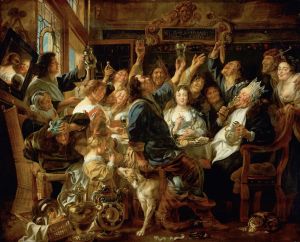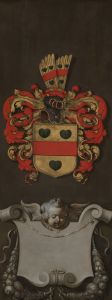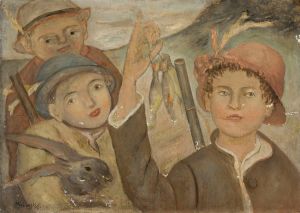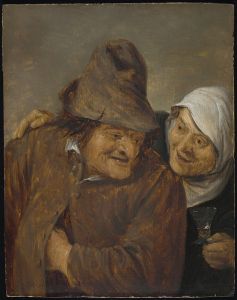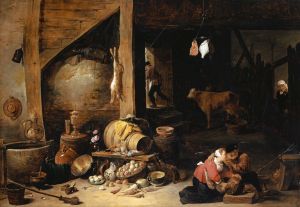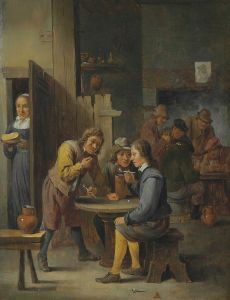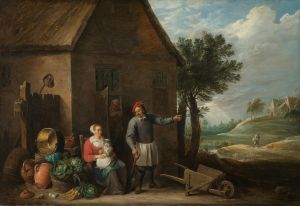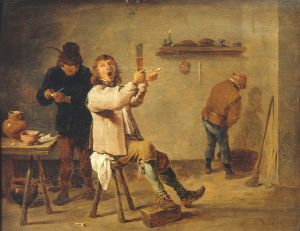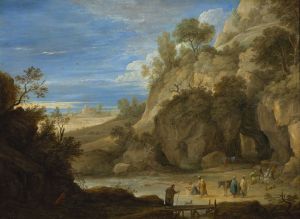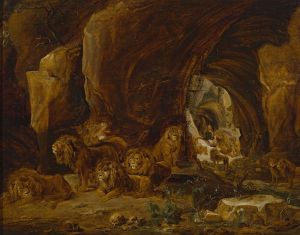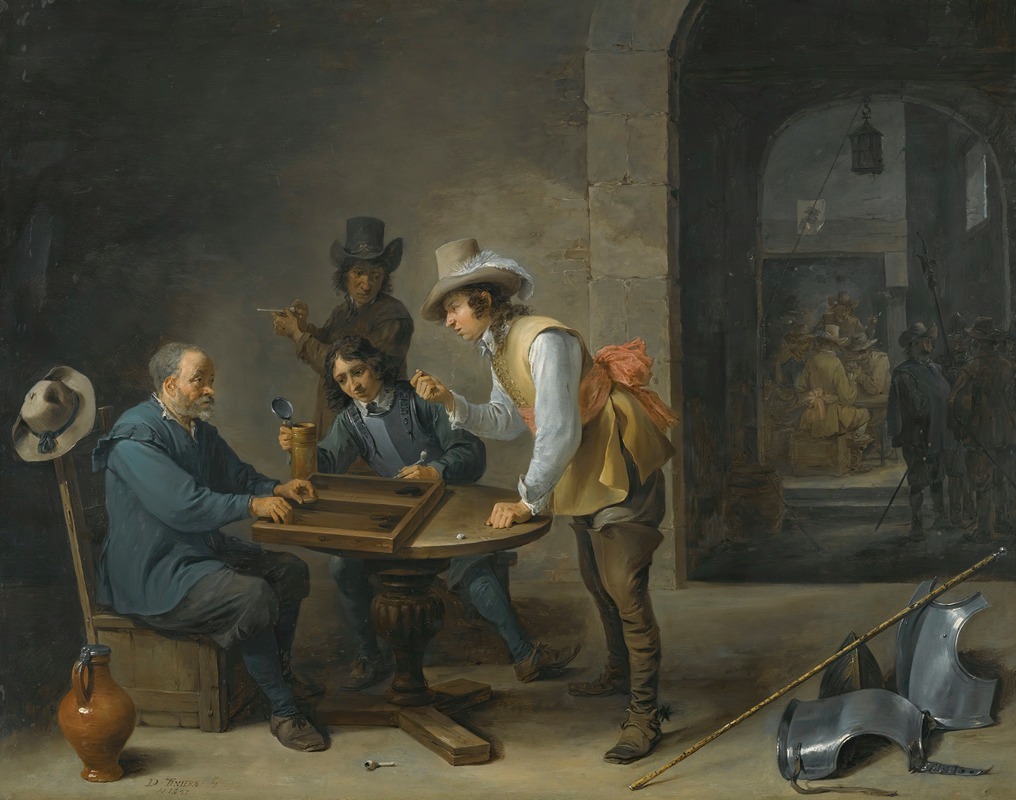
A Guardroom Scene With Tric-Trac Players In The Foreground
A hand-painted replica of David Teniers The Younger’s masterpiece A Guardroom Scene With Tric-Trac Players In The Foreground, meticulously crafted by professional artists to capture the true essence of the original. Each piece is created with museum-quality canvas and rare mineral pigments, carefully painted by experienced artists with delicate brushstrokes and rich, layered colors to perfectly recreate the texture of the original artwork. Unlike machine-printed reproductions, this hand-painted version brings the painting to life, infused with the artist’s emotions and skill in every stroke. Whether for personal collection or home decoration, it instantly elevates the artistic atmosphere of any space.
David Teniers the Younger, a prominent Flemish Baroque painter, is renowned for his genre scenes, landscapes, and depictions of peasant life. One of his notable works is "A Guardroom Scene With Tric-Trac Players In The Foreground." This painting exemplifies Teniers' skill in capturing everyday life and his ability to infuse his scenes with a sense of realism and narrative.
The painting depicts a lively scene set in a guardroom, a common subject in Teniers' oeuvre. Guardrooms were often portrayed in 17th-century Flemish art as spaces where soldiers or guards would gather, relax, and engage in various activities during their downtime. In this particular work, the focus is on a group of tric-trac players, a popular board game similar to backgammon, which was widely played in Europe during this period.
Teniers' composition is characterized by its detailed and dynamic arrangement. The players are situated in the foreground, deeply engrossed in their game, which adds an element of tension and engagement to the scene. The artist's attention to detail is evident in the depiction of the players' expressions, their clothing, and the intricate design of the tric-trac board. This meticulous attention to detail is a hallmark of Teniers' style, reflecting his ability to observe and render the nuances of human interaction.
The background of the painting is equally significant, as it provides context and depth to the scene. Other figures are seen engaging in various activities typical of a guardroom setting, such as cleaning weapons, conversing, or resting. This bustling environment is rendered with a keen eye for the interplay of light and shadow, a technique that Teniers mastered to create a sense of space and atmosphere.
Teniers was known for his ability to blend elements of genre painting with a touch of humor and social commentary. In "A Guardroom Scene With Tric-Trac Players In The Foreground," he captures the camaraderie and leisure of soldiers, offering a glimpse into their lives beyond the battlefield. The painting serves as both a historical document and a work of art, providing insight into the customs and pastimes of 17th-century Flemish society.
The use of color in the painting is subtle yet effective, with earthy tones dominating the palette. This choice enhances the realism of the scene and reflects the typical color schemes of the Baroque period. Teniers' skillful use of chiaroscuro further adds to the painting's depth, highlighting the figures and creating a sense of three-dimensionality.
David Teniers the Younger was a prolific artist whose works were highly sought after during his lifetime. His ability to capture the essence of everyday life with precision and wit made him a favorite among collectors and patrons. "A Guardroom Scene With Tric-Trac Players In The Foreground" is a testament to his talent and remains an important example of Flemish genre painting.
Today, Teniers' works are held in high esteem and can be found in major museums and collections worldwide. His paintings continue to be studied and appreciated for their artistic merit and historical significance, offering valuable insights into the culture and society of 17th-century Flanders.





